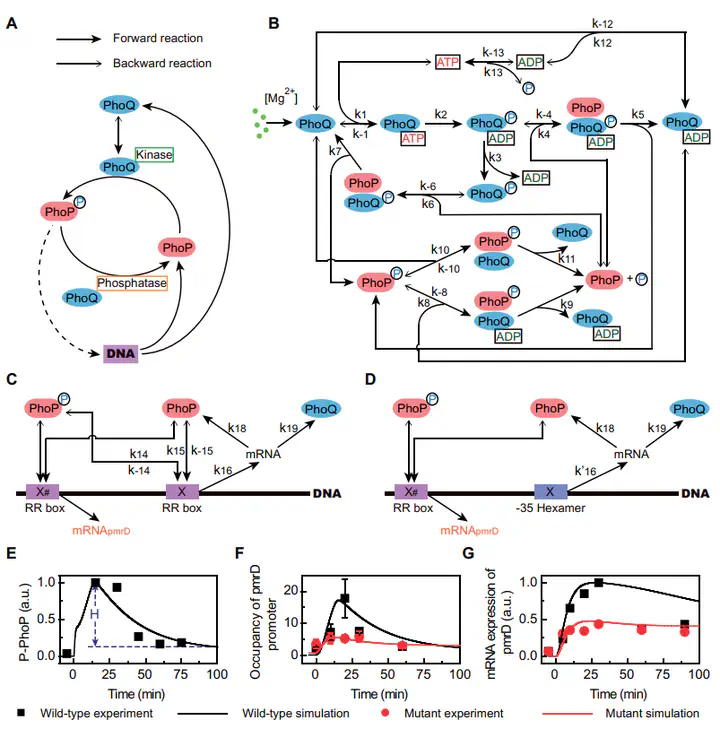Biphasic regulation of transcriptional surge generated by the gene feedback loop in a two-component system

Abstract
Transcriptional surges generated by two-component systems (TCSs) have been observed
experimentalely in various bacteria. Suppression of the transcriptional surge may reduce the activity,
virulence and drug resistance of bacteria. In order to investigate the general mechanisms, we use a PhoP/PhoQ
TCS as a model system to derive a comprehensive mathematical modeling that governs the surge. PhoP is a
response regulator, which serves as a transcription factor under a phosphorylation-dependent modulation by
PhoQ, a histidine kinase.
Results : Our model reveals two major signaling pathways to
modulate the phosphorylated PhoP (P-PhoP) level, one of which promotes the generation of P-PhoP, while the
other depresses the level of P-PhoP. The competition beetween the P-PhoP-promoting and the P-PhoP-depressing
pathways determines the generation of the P-PhoP surge.Furthermore, besides PhoQ, PhoP is also a bifunctional
modulator that contributes to the dynamic control of P-PhoP state, leading to a biphasic regulation of the
surge by the gene feedback loop. In summary, the mechanisms derived from the PhoP/PhoQ system for the
transcriptional surges provide a better understanding on such a sophisticatedsignal transduction system and
aid to develop new antimicrobial strategies targeting TCSs.